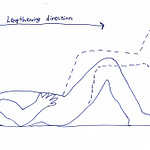Instructions for a 12-15 minute session
[A guided audio version is above]
Find a Place: Depending on how many people are home on any day, I meditate either in my kids’ room, which is quiet and large (and not drafty), or in my wee office. In olden days, I would practice meditation for a minimum of 25-30 minutes but at this season of peak parenting, I often sit about 12-15 minutes in the mid-morning once the flurry of breakfast and getting people dressed has subsided.
Set a Timer: After the usual procrastinating has run its course, I set a timer on one of the various surveillance devices within earshot (Google on my phone or Alexa in the office). It’s best to set a timer rather than meditate for how long you feel like it, for two reasons:
1) An external timer allows your brain to stop deciding or worrying about when you should stop. You can give yourself entirely to the practice.
2) Also, you are committing to working with whatever arises during the session, so even if you’re bored or anxious or your phone dings (pro tip: put your phone in Do Not Disturb mode – the true secret of the Dalai Lama’s spiritual progress), you’ll keep sitting. Sitting through difficulties with the right compassionate viewpoint is how you make practice a way of life, rather than just another activity.
Establish Posture: Unless I need to lay down (which I do at times) I take my sitting posture, which over the years I’ve distilled into four main points (recap here).
Check in: I put my hand on my chest or belly and ask: How am I doing, really?
I want to begin my session by opening and listening, instead of walling off against uncomfortable feelings.
The Instructions*: Rather than set up a duality where meditating is going great when I’m with the breath and stinking when I’m thinking, I cultivate a wide-open attitude in my meditation. Thoughts and emotions are natural occurrences like weather. Who am I to reject them?
1) My intention throughout the practice is to place my awareness on the body breathing and sounds of my environment.
Inevitably (and often!), a tantalizing thought about baked bread or politics pops up and my awareness follows it like a dog after ball. Eventually, I will realize that I am “lost” in thought. But I’m not really lost – my awareness has simply been placed on my thoughts, not the bodily senses as I had intended.
2) I notice what it feels like when my awareness is with my thoughts and then return again to awareness on the body breathing and sounds. The practice is simply highlighting the contrast between what it feels like when awareness is with the body breathing and when it’s with thoughts. This is a beautiful practice – non-judgmental and welcoming of all that arises. You develop confidence that nothing is “in the way” of your meditation.
*(I do give these instructions on the audio above. For me, it’s easier to process meditation instructions orally rather than in written form.)
Dedication of Merit: To close the formal practice – and begin my informal practice session off the cushion – I offer a dedication of merit, which I think of as a donation of effort towards a greater good. I vow to make these efforts benefit all beings; for my family members; total strangers; for grasshoppers in Kansas. The DOM is important. The more we realize we aren’t just meditating for ourselves, the more we meditate. We don’t get so hung up on our individual successes and failures. We are joining the great stream of practice which is millions of individuals wide and thousands of years old, flowing in the direction of greater wisdom, kindness, and change.
Join us tonight, in practice, for Your Body Is Your Practice at 8 PM.










Share this post